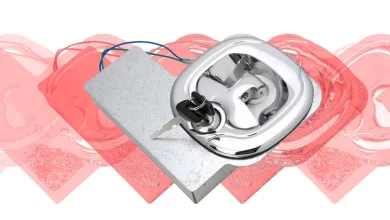Unlocking Profit Potential: Using Futures and Options in HDFC Bank Share Trading

Are you an equity investor who’s looking to maximise your profits? If you’re only trading shares, you might be missing out on some great opportunities. The good news is that you can unlock greater profit potential by using derivatives like futures and options. With these tools, you can operate various strategies that can take the market movements in either direction.
In this article, we will show you how HDFC Bank shareholders can use futures and options to boost their returns.
Getting a Grip on Futures Trading
Futures contracts enable traders to purchase or sell an asset, like HDFC Bank shares, at a predetermined price on a specific date in the future. Unlike buying the shares outright, you only need to put down a small initial amount to open a futures position. This allows you to control more shares with less money, but beware that it also increases your potential profits or losses.
Suppose you are interested in buying shares of HDFC Bank, which cost Rs.1,500 each. If you think the price will go up, you have two options. You could buy 100 shares for Rs.150,000, or you could put down Rs.30,000 as a deposit to control 100 shares worth Rs.150,000 through futures.
Let’s say HDFC bank share prices increase by 10% to Rs.1,650 within a month. If you had bought the shares outright, your profit would be Rs.10,000. But if you had opted for futures, your profit would be Rs.15,000. This is because futures allow you to control 100 shares with a smaller deposit, which gives you more leverage.
In other words, futures give you a higher return on your investment compared to buying shares outright.
However, leverage is a double-edged sword. The same math works in reverse if HDFC shares fall. A 20% decline to Rs.1,200 would turn your Rs.15,000 profit into a Rs.30,000 loss. Hence, utilising stop losses and avoiding overexposure is crucial when trading futures. Start slowly with small positions to get more comfortable with managing risk.
Generating Income from Options Trading
Besides margin trading, options contracts provide a means of earning regular income from HDFC Bank shareholdings. Here are two simple options and strategies to help you get started:
- Covered Calls: You already own HDFC shares. To supplement returns, you can sell call options on those same shares. For example, with HDFC at Rs.1,500, you sell the Rs.1,600 call option expiring in 60 days at a premium of Rs.30 per share.
There are now two potential outcomes when the option expires:
1) HDFC stays below Rs.1,600 – You pocket the Rs.30 per share premium income.
2) HDFC rises above Rs.1,600 – Your shares get called away (sold) at Rs.1,600, still higher than your purchase price.
Either way, you earn extra income from your HDFC investment by selling call options. Rinse and repeat by selling further out-of-the-money calls each month.
- Cash-Secured Puts: Consider generating income and purchasing HDFC shares at a lower price by using cash-secured puts.
Again when HDFC is at Rs.1,500, you sell a Rs.1,400 put option expiring in 90 days for a premium of Rs.20 per share. One of two things can happen:
1) HDFC stays above Rs.1,400 – You earn a premium income of Rs. 20 per share in your pocket.
2) HDFC drops below Rs.1,400 – You get assigned and must buy shares at Rs.1,400, which is below the current market price.
By selling puts, you generate income and either end up owning the stock at a lower net cost basis or keep the premium income free and clear if prices hold steady.
Turning Volatility into Profits via Spreads
Once comfortable with basic covered calls and cash-secured puts, you can move on to more advanced options spread strategies. These future and options trading allow you to tailor your market outlook, risk tolerance and profit goals. Two examples are:
- Bull Call Spreads: Construct a bull call spread if you are moderately bullish on HDFC Bank. This involves buying lower strike call options and simultaneously selling higher strike calls to fund the purchase. You can earn a maximum gain that is equal to the difference in strike prices less the net premium paid. For example:
- HDFC at Rs.1,500
- Buy Rs.1,600 call for Rs.25
- Sell Rs.1,700 call for Rs.15
- Net Debit: Rs.10 per share
If HDFC rises above Rs.1,700 at expiration, you gain the maximum profit of Rs.100 per share (Rs.1,700 strike minus Rs.1,600 strike) less the Rs.10 net premium paid, or Rs.90 total profit.
Losses are limited to Rs.10 net premium paid if share prices drop below Rs.1,600. By incorporating option spreads, you define risk while leveraging volatility.
- Bear Put Spreads: Construct a bear put spread if you are moderately bearish on HDFC. This can be done by purchasing put options with higher strike prices and simultaneously selling lower strike put options. For example:
- HDFC at Rs.1,500
- Buy Rs.1,400 put for Rs.20
- Sell Rs.1,300 put for Rs.10
- Net Debit: Rs.10 per share
Maximum profit potential occurs if HDFC bank share prices fall below Rs.1,300 at expiration. You gain the difference between strike prices of Rs.100 minus Rs.10 net premium paid or Rs.90 total profit.
Risk is defined as just the Rs.10 net premium paid if prices stay above Rs.1,400. By strategically combining options, you can turn volatile price action in your favour.
Conclusion
Using futures and options alongside HDFC Bank shares can increase profit potential and downside protection. Start with basic covered calls and cash-secured puts to generate income and progress to more advanced strategies as you gain experience. Always maintain prudent position sizing and risk management. With proper education, futures and options can offer opportunities for investors and traders to maximise their returns.





